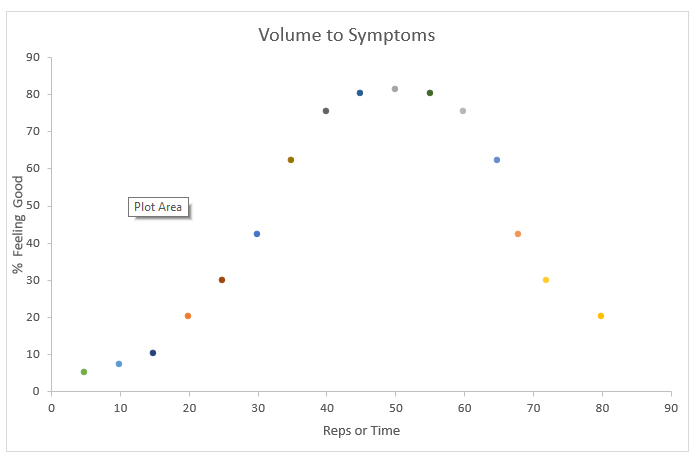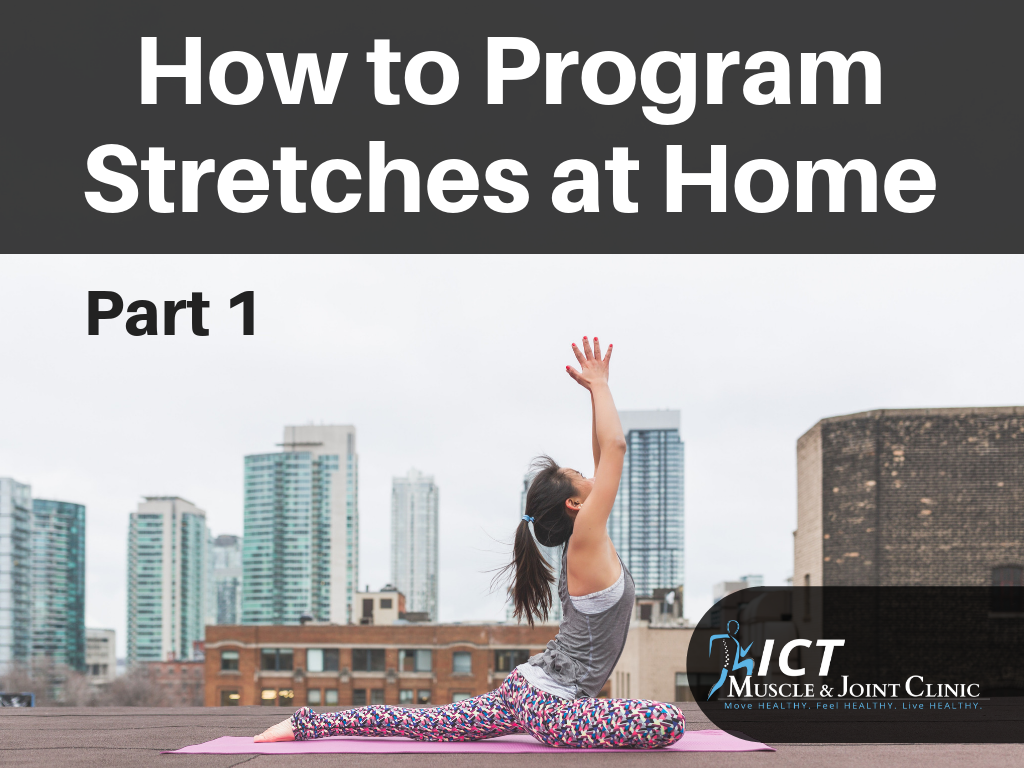How to Program Stretches at Home: Part 1
It’s important to understand too much of a good thing can be bad. I often use the analogy,
"A shot or two of tequila can feel good, 20 or 30 and you’re hurting the next morning.”
This holds true with physical therapy exercises and stretches. There is always a point when too much is too much.
The diagram below can help you understand how to program stretches at home inorder to maximize results without increasing the potential for injury. It’s also important to know these are general rules to follow for those in pain (ie shoulder pain, low back pain), not for overall mobility.
Understanding the Exercise Chart
Between the two axes, the x-axis is more important to understand. As shown in the diagram, the x-axis can be either reps or amount of time. However, the title is “Volume to Symptoms.” The volume can be either amount of reps performed in a given time frame, or amount of time spent in a position in a given time frame.
Example of reps: 90 reps in a single day or 90 reps in 30 minutes
Example of time: 15 seconds in a specific stretch or 5 minutes in a specific stretch
Either of these approaches (reps or time) can decrease or increase pain. What matters is if the correct direction of movement is found.
The y-axis highlights how good you feel. 0 being miserable and 100 (not shown) being amazing.

Let’s run through two examples using the diagram above to help navigate how to help treat yourself at home.
Case history: Person with low back pain who feels better after touching their toes.
Example 1:
Let’s use number of reps as our way to self-treat.
A person would perform 10 toe touches. For the diagram above this would equal to almost no change. So, the person would perform another 10 toe touches; this now shows improvement in how good the person feels. This trend continues till 60ish reps which then the stretch seems to be having a negative response (i.e. feeling worse). Here is the kicker – this is where the person needs to stop. Too much of a good thing too fast can be bad.
Example 2:
Same scenario but let’s focus on amount of time in the stretch.
A person would perform a 10 second toe touch. For the diagram above this would equal to almost no change. So, the person would perform another immediate 10 second toe touches; this now shows improvement in how good the person feels. This trend continues till 60ish seconds which then the stretch seems to be having a negative response (i.e. feeling worse). Same kicker – this is where the person needs to stop. Too much of a good thing too fast can be bad.
Beyond the Reps
Remember, the advice above is for general use in treating pain through stretches. Pain can be very complex and may need more help via your local chiropractor or physical therapist. To better understand self-treating at home through stretches, follow up with Part 2, which will give better guidance for home use.
About the author
Dr. Keith Sparks is an award-winning chiropractor, functional medicine expert, and the co-founder of ICT Muscle & Joint Clinic. Dr. Sparks’ emphasis of care originated within the fields of rehabilitation, soft-tissue therapies, and chiropractic. To date, he has brought this unique combination of skills into union with functional medicine. The sole purpose of intertwining these distinct skills, knowledge, and services is to provide incomparable care to his local community. Dr. Keith Sparks is often seen in the Wichita, KS community speaking at business events and teaching health and performance classes.
